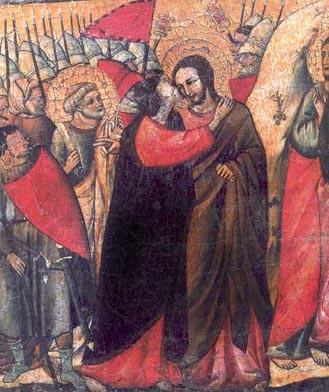29

- Background: There are two very different interpretations of the Gospel of Judas. The editors of the original National Geographic translation make out Judas to be a hero,
the recipient of special instruction from Jesus "that can eradicate ignorance and lead to an awareness of oneself and God."
Here is their summary:
- In contrast to the New Testament gospels, Judas Iscariot is presented as a thoroughly positive figure..., a role model for all those who wish to be disciples of Jesus. That is probably why theGospel of Judas ends with the story of the betrayal of Jesus and not the crucifixion of Jesus. The point of the gospel is the insight and loyalty of Judas as the paradigm of discipleship. In the end, he does exactly what Jesus wants. In the biblical tradition, however, Judas — whose name has been linked to "Jew" and "Judaism" — was often portrayed as the evil Jew who turned Jesus in to be arrested and killed.... In the Gospel of Judas, Judas Iscariot turns out to be Jesus' beloved disciple and dear friend.
- April D. DeConick argues, on the contrary, that this is a misunderstanding based on mistranslation of the Coptic text. Her summary:
We will review the two sides of this debate in class, then follow the DeConick interpretation.
Readings:
(1) Mark's account of the betrayal (Mk 14:43-46), Luke's account of Judas at the Last Supper (Lk 22:14-23),
and his account of Judas' death (Acts 1:15-20)
(2) The Gospel of Judas. Recommended books (unfortunately hardbound, but lots of used copies available):
April D. DeConick, The Thirteenth Apostle (New York, Continuum, 2007).
Compare the first edition:
Rodolphe Kasser, Marvin Meyer, and Gregor Wurst, The Gospel of Judas (Washington D.C., The National Geographic Society, 2006).
Preparations: xxx